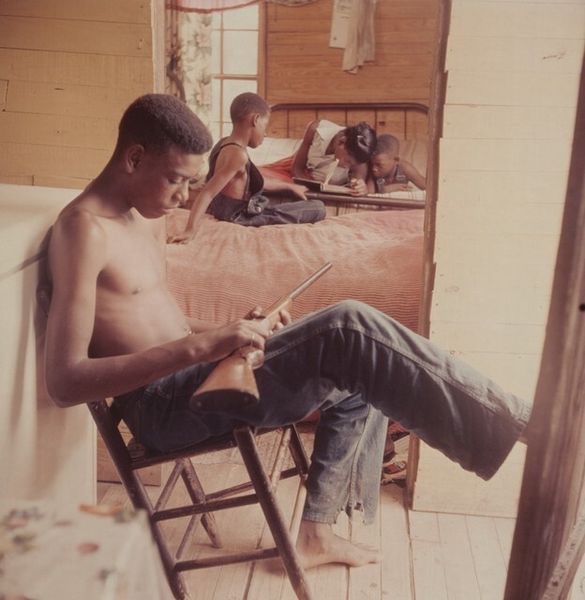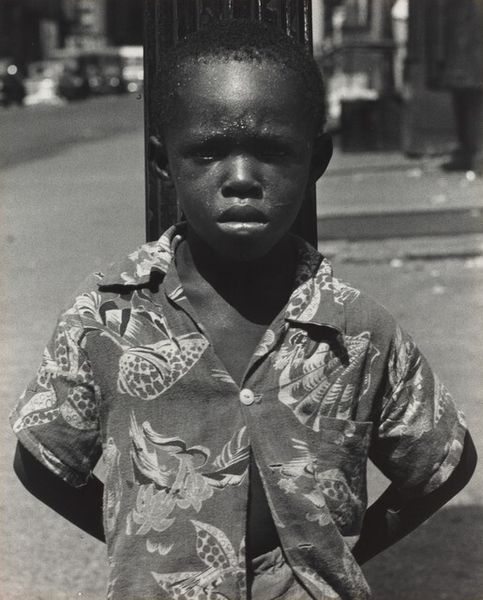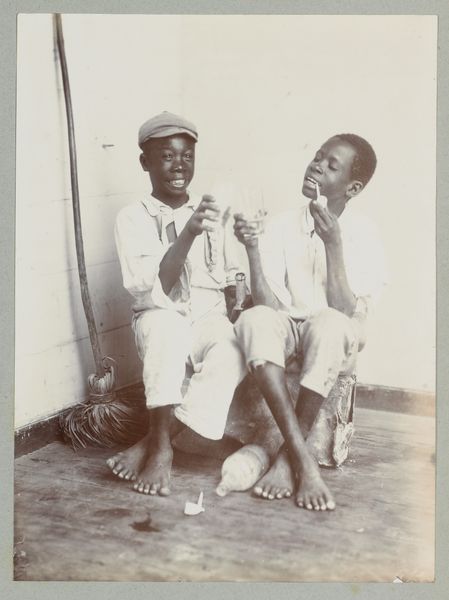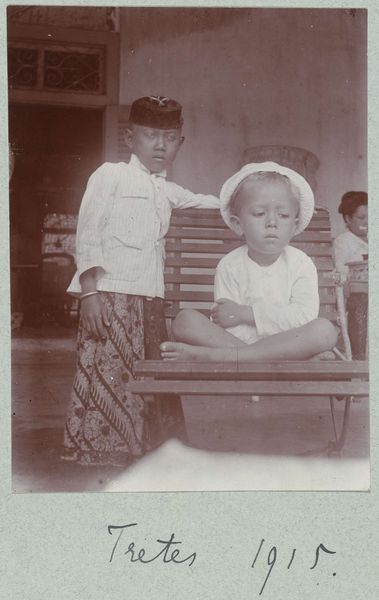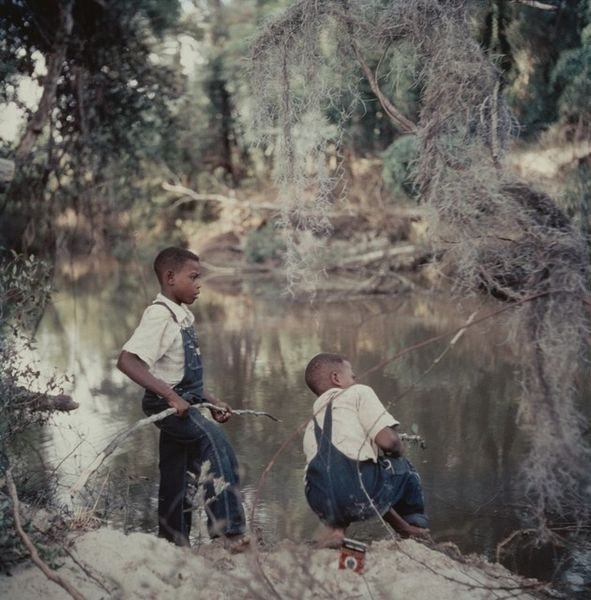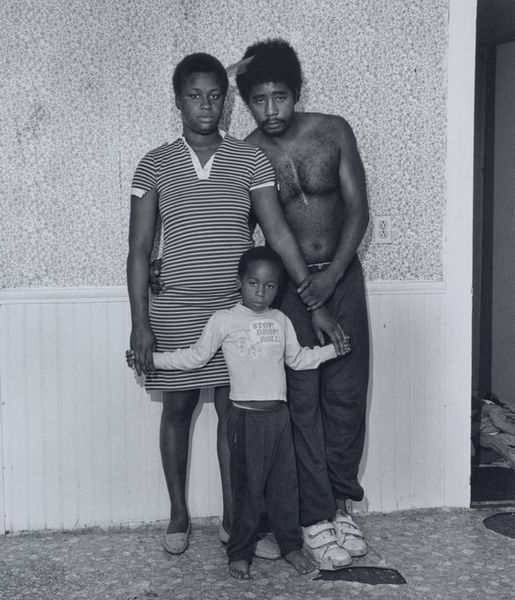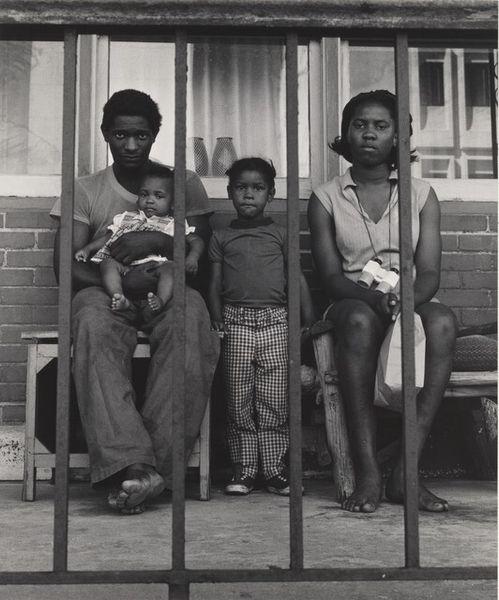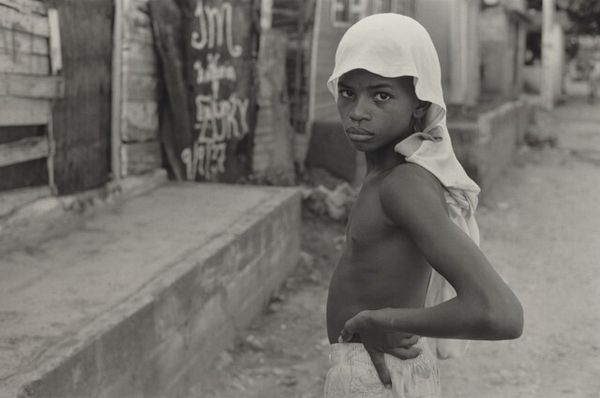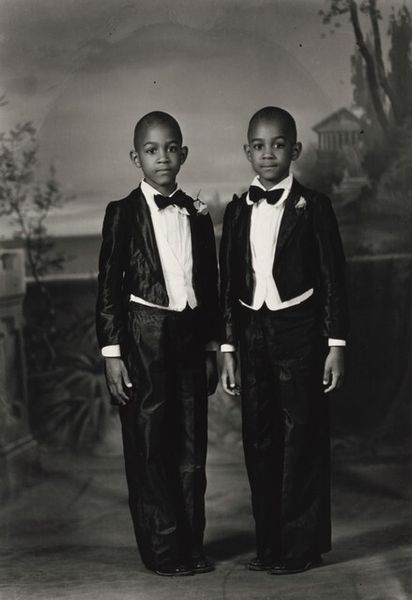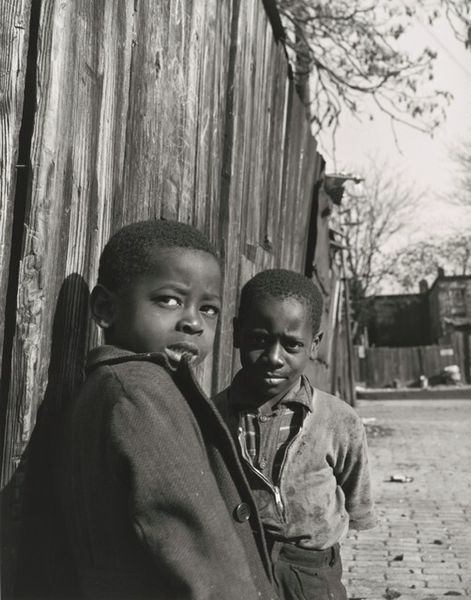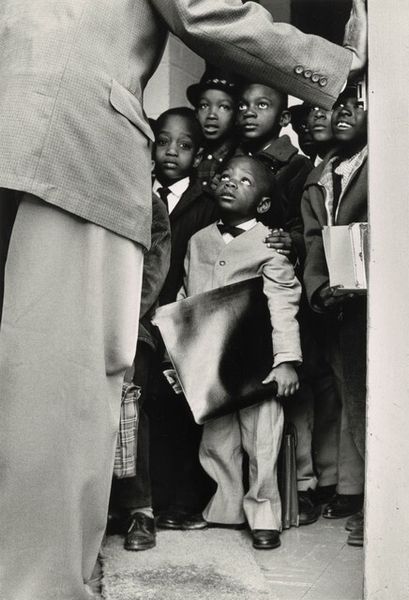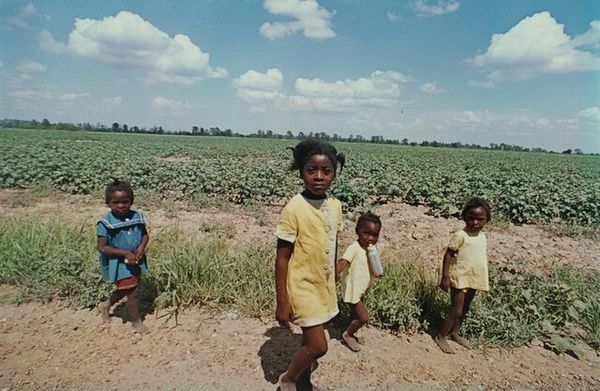
photography, gelatin-silver-print
#
portrait
#
landscape
#
harlem-renaissance
#
social-realism
#
street-photography
#
photography
#
gelatin-silver-print
#
street photography
#
realism
Dimensions: sheet: 51.1 × 50.8 cm (20 1/8 × 20 in.) image: 49.9 × 49.5 cm (19 5/8 × 19 1/2 in.)
Copyright: National Gallery of Art: CC0 1.0
Curator: This evocative photograph is titled "Boys, Shady Grove, Alabama," created by Gordon Parks after 1956. It’s a gelatin silver print, typical of Parks’ documentary style. Editor: Immediately, the vulnerability hits you, right? It's in their bare feet planted in that red earth, that deep earth tone dominating the whole scene. There’s such an intense contrast there between innocence and, I don’t know, hardship, maybe. Curator: Parks, throughout his career, was deeply invested in documenting the lives of African Americans and shedding light on social injustice. Shady Grove, Alabama, for him, represented a microcosm of the broader struggle for civil rights. Editor: And the boy who’s squatting, there's such an intensity in his gaze. He's clutching this little piece of string, his crossed arms protecting himself. Almost a wary defiance. It really speaks, I think, about resilience amidst poverty. He’s kind of holding the whole frame together, isn't he? Curator: Absolutely. The composition is very deliberate. The taller, slightly out-of-focus figure behind him, maybe a guardian or older sibling, anchors him to this place. It suggests a continuity, both generational and within the landscape. Parks uses that beautifully to tell this bigger story about childhood and place. Editor: You know, there is also an uncomfortable timelessness about the photograph too. I think maybe because these images continue to represent inequality and limited choices. Does that make sense? Curator: Completely. Parks intended to expose those systems. To create a space for empathy, and he did so by placing humanity right at the core of the photographic process. And his practice helped lay the groundwork for other artists committed to social change. Editor: It's kind of heartbreaking to connect to a picture like that—the weight of it—but incredibly powerful to stand with that weight. It brings everything closer to you, everything to life. Curator: Yes, I see Parks’ work as a reminder to engage actively with those issues and continue to fight for meaningful social change, remembering that art helps galvanize movements.
Comments
No comments
Be the first to comment and join the conversation on the ultimate creative platform.

